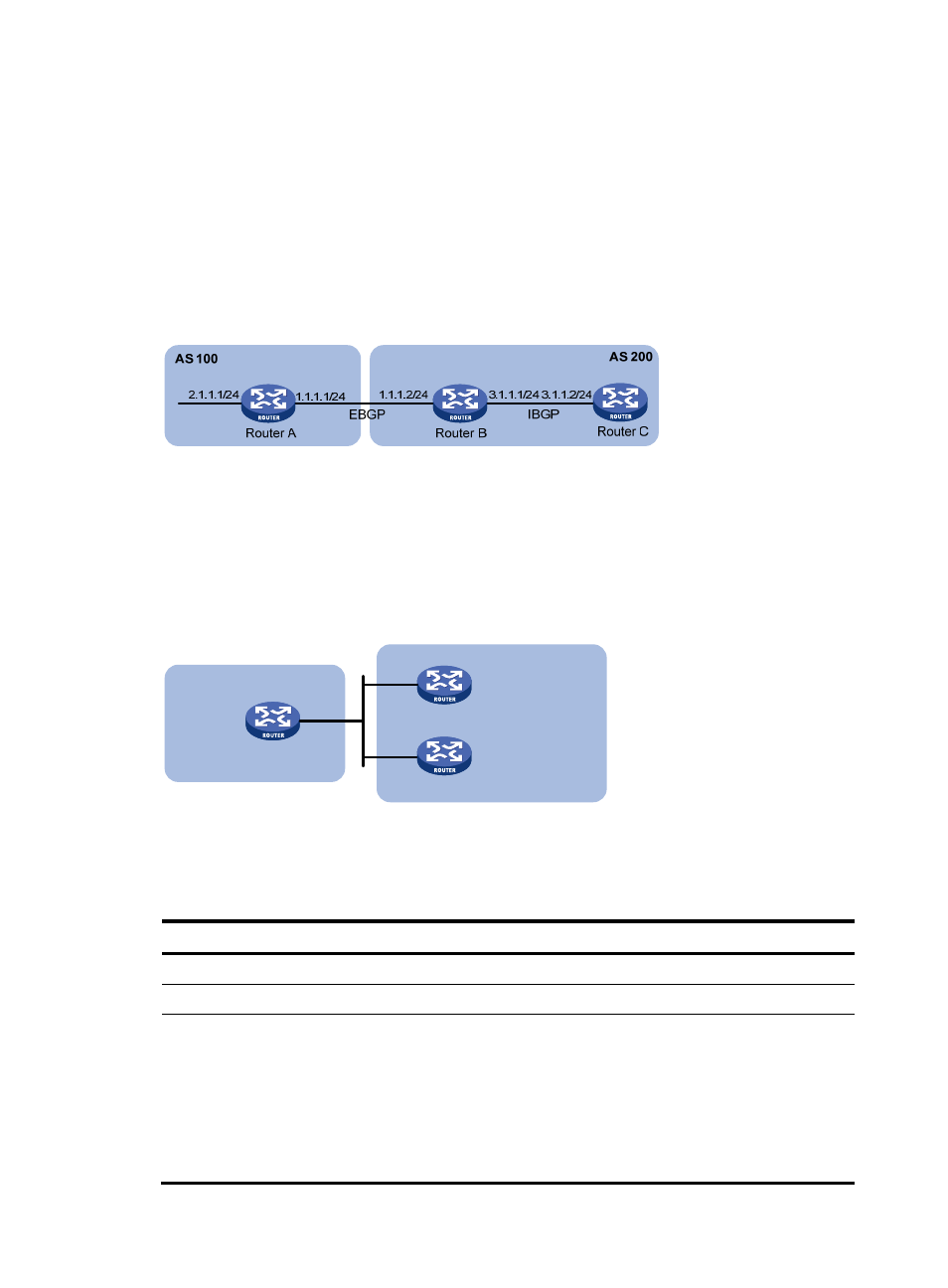Configuring the next hop attribute – H3C Technologies H3C SR8800 User Manual
Page 238

222
Configuring the next hop attribute
By default, when advertising routes to an IBGP peer/peer group, a BGP router does not set itself as the
next hop. However, to ensure a BGP peer can find the correct next hop in some cases, you need to
configure the router as the next hop for routes sent to the peer.
For example, as shown in
, Router A and Router B establish an EBGP neighbor relationship, and
Router B and Router C establish an IBGP neighbor relationship. When Router B advertises a network
learned from Router A to Router C, if Router C has no route to IP address 1.1.1.1/24, you need to configure
Router B to set itself as the next hop (3.1.1.1/24) for the route to be sent to Router C.
Figure 87 Next hop attribute configuration
If a BGP router has two peers on a common broadcast network, it does not set itself as the next hop for
routes sent to an EBGP peer by default. As shown in
, Router A and Router B establish an EBGP
neighbor relationship, and Router B and Router C establish an IBGP neighbor relationship. They are on
the same broadcast network 1.1.1.0/24. When Router B sends EBGP routes to Router A, it does not set
itself as the next hop by default. However, you can configure Router B to set it as the nexthop (1.1.1.2/24)
for routes sent to Router A by using the peer next-hop-local command as needed.
Figure 88 Next hop attribute configuration
If you have configured BGP load balancing on a BGP router, the router will set it as the next hop for routes
sent to an IBGP peer/peer group regardless of whether the peer next-hop-local command is configured.
To configure the next hop attribute:
Step Command
Remarks
1.
Enter system view.
system-view
N/A
2.
Enter BGP view.
bgp as-number
N/A
3.
Specify the router as the next hop of
routes sent to a peer/peer group.
peer { group-name | ip-address }
next-hop-local
Optional.
By default, the router sets it
as the next hop for routes
sent to an EBGP peer/peer
group, but does not set it as
the next hop for routes sent
to an IBGP peer/peer
group.
Router A
Router B
AS 100
AS 200
1.1.1.1/24
Router C
1.1.1.2/24
1.1.1.3/24
- H3C SR6600-X H3C SR6600 H3C WX6000 Series Access Controllers H3C WX5000 Series Access Controllers H3C WX3000 Series Unified Switches H3C LSWM1WCM10 Access Controller Module H3C LSWM1WCM20 Access Controller Module H3C LSQM1WCMB0 Access Controller Module H3C LSRM1WCM2A1 Access Controller Module H3C LSBM1WCM2A0 Access Controller Module
